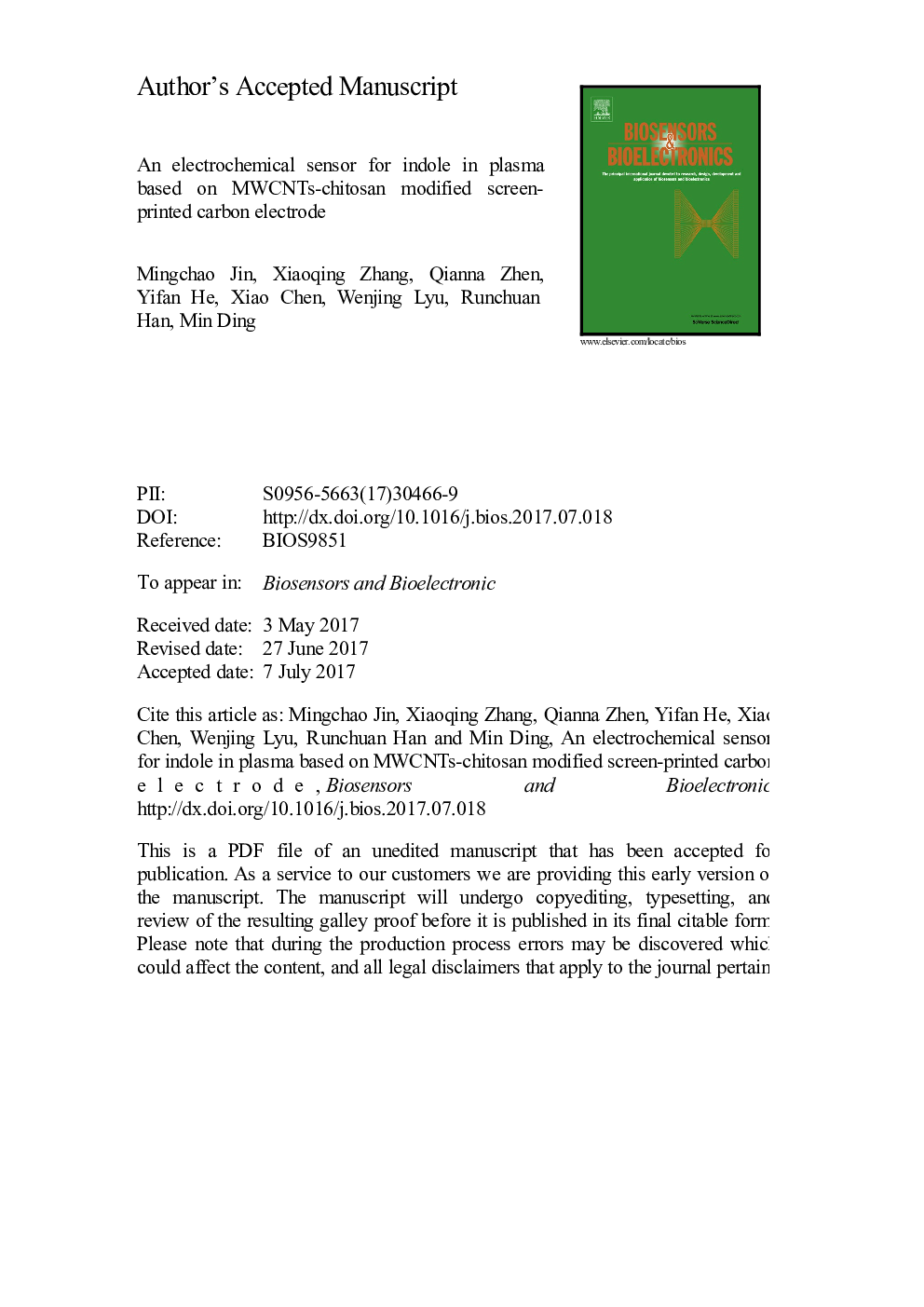| Article ID | Journal | Published Year | Pages | File Type |
|---|---|---|---|---|
| 5030941 | Biosensors and Bioelectronics | 2017 | 29 Pages |
Abstract
Indole is an essential metabolite in intestinal tract. The dysregulation of plasma indole concentration occurred in various diseases. In this study, the indole in plasma was determined directly using electrochemical sensor with multiwall carbon nanotubes-chitosan (MWCNTs-CS) modified screen-printed carbon electrode (SPCE). The electrochemical behavior of indole was elucidated by cyclic voltammetry (CV) and differential pulse voltammetry (DPV) on the MWCNTs-CS composites modified SPCE (MWCNTs-CS/SPCE). The results showed that the current responses of indole improved greatly due to the high catalytic activity and electron transfer reaction of nano-composites. Under the optimized conditions, the linear range of indole was from 5 to 100 μg Lâ1 with the detection limit of 0.5 μg Lâ1 (S/N = 3). This novel electrochemical sensor exhibited acceptable accuracies and precisions with the variations less than 7.3% and 9.0%, respectively. Furthermore, high performance liquid chromatography (HPLC) method was utilized to compare with the established electrochemical method for the determination of indole in plasma. The results showed a high correlation between the two methods. At last, the electrochemical sensor was successfully applied to detect the level of indole in plasma samples with satisfactory selectivity and sensitivity. The concentrations of plasma indole in healthy pregnant women and gestational diabetes mellitus (GDM) patients were 5.3 (4.1-7.0) μg Lâ1 and 7.2 (4.5-9.4) μg Lâ1, respectively.
Related Topics
Physical Sciences and Engineering
Chemistry
Analytical Chemistry
Authors
Mingchao Jin, Xiaoqing Zhang, Qianna Zhen, Yifan He, Xiao Chen, Wenjing Lyu, Runchuan Han, Min Ding,
